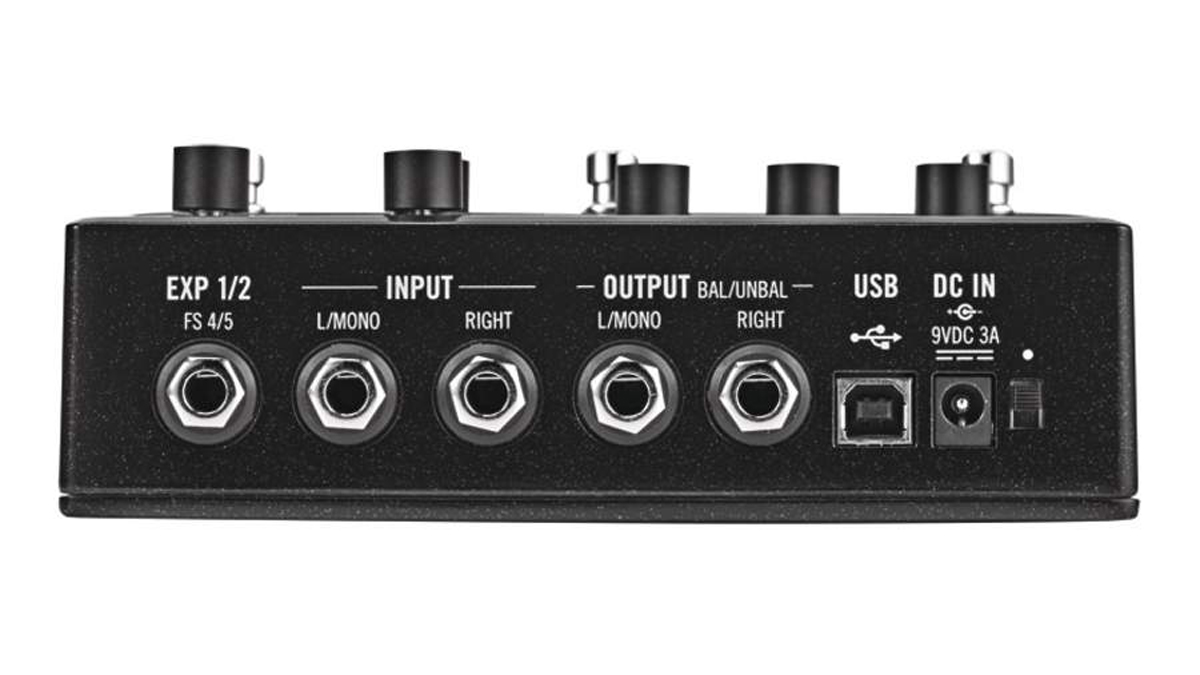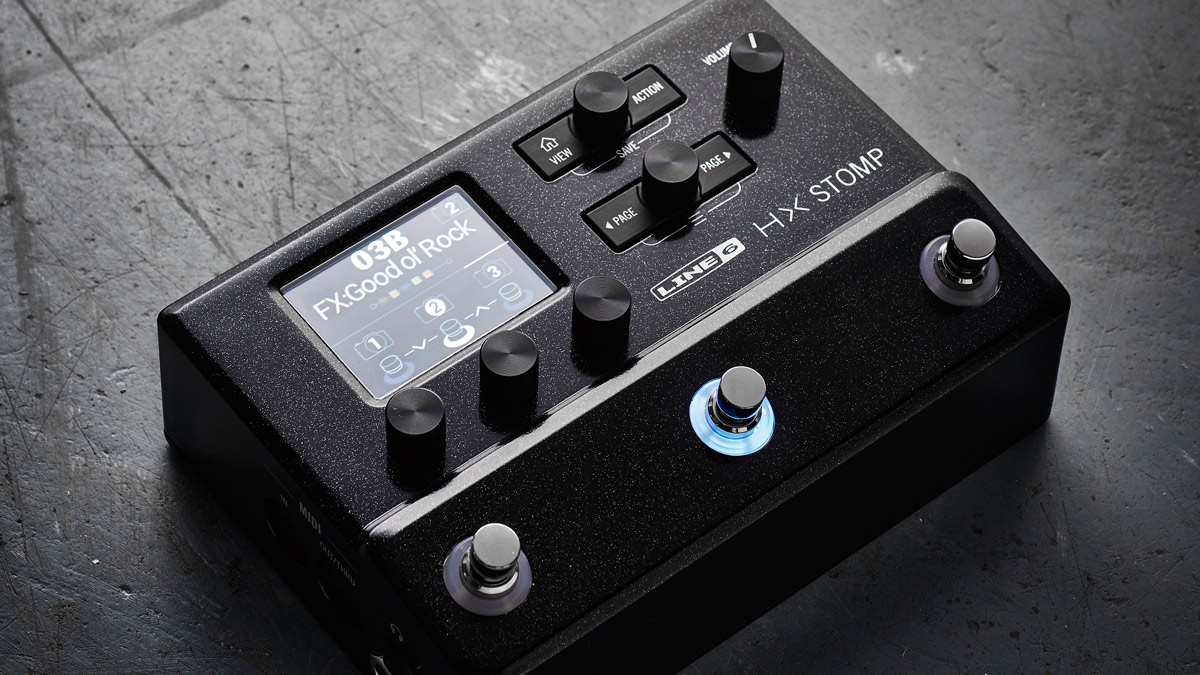MusicRadar Verdict
It's not as flexible on-the-fly as its larger forebears, but the HX Stomp offers a staggering number of tones from a pedalboard-friendly package.
Pros
- +
Unbelievable tonal potential.
- +
Useful standalone and as part of an existing pedalboard.
- +
Integrates with MIDI systems.
Cons
- -
Form factor/screen means its not as easy to set up as the larger Helix models.
MusicRadar's got your back
Recognising that some players just want the effects from the Helix, Line 6 brought out the HX Effects - a slimmed-down Helix with most of the effects, and none of the amps.
The HX Stomp is the counterpart to that unit, in that it contains 300 effects, including the Helix, M Series and legacy Line 6 patches, as well as the amp, cab and mic options of the full-fat Helix. It even supports loading impulse responses, so if you have modelled your own amps, or purchased commercial IRs, they can be loaded as well.
Cramming not only the sounds of those units, but also a full-colour screen into a unit the size of the HX Stomp is certainly impressive and no mean feat. This leads to what seems to be a failure of the unit: that owing to its size, it’s very hard to not hit one or more of the parameter control knobs with your foot when hitting the footswitches. Line 6, however, has clearly thought of this, and those knobs are not functional when the unit isn’t in edit mode; nevertheless, there is always the worry that you’re one heavy stomp away from a broken pedal. Still, it’s a relatively minor concern, and perhaps pitching up the front of the pedal on a ’board would be enough to avoid damaging anything.
- Explore the best multi-effects pedals around today

With MIDI in and out, there’s clearly been some consideration for those that want to incorporate the HX Stomp into a rig controlled by a pedal switcher. In that context, it’s easy to see the attraction. Though the HX Stomp is limited in terms of its controls on the front, it’s highly customisable, and offers a broad palette of professional-grade effects to explore. For the guitarist that wants specific modulations, delays or a cab sim on tap ‘just in case,’ the HX Stomp is a smart, compact solution, and the capacitive footswitches make assigning and editing a relatively error-free procedure - it’s unlikely you’ll need to refer to the manual much at all.
In terms of the sounds, it’s exactly the high standard that you’d expect from Line 6. On the distortion side, we found a decent amount of mileage with the Rat and DS-1 models, before settling on the OCD as one of the better all-round drives present. Through our single-ended 5W British-voiced tube amp, we found a lot to like with both single-coil and humbucker pickups, with a fat drive sound dipping into heavy saturation as we rolled up the output.
Plugging in our studio headphones, we set up a Plexi model at the end of our signal chain, dropped the gain and master volume, and stuck an 87 condenser model in front. Going from the amp in the room to a simulated amp is always a claustrophobic experience, but moving the Plexi forward a spot - as simple as pressing the rotary knob, moving the block and clicking again to confirm - and adding a room reverb with short decay and a low mix proved surprisingly convincing. Even breaking out our trusty seven-string didn’t faze the HX Stomp, and it handled hotter EMG active pickups just fine. In terms of the reverbs, the newer reverb models didn’t overly excite us apart from the rich Ganymede patch, while we found ourselves generally tending back toward the granular reverb of the Particle patch in the ‘legacy’ section.
In terms of the sounds, it’s exactly the high standard that you’d expect from Line 6
Meanwhile, in delay-land, we’re delighted to discover that there’s more on offer here than you can shake a stick at, with the Sweep, Transistor Tape, Cosmos and Harmony delays impressing this reviewer. Conversely, the HX Stomp is almost a victim of its own small-format success. When you consider the sheer depth and quality of the sounds on offer here, you may find yourself looking at the Helix LT or Helix and wondering to yourself what having additional footswitches would allow you to do.
That said, just setting up a basic rig, such the excellent ping-pong delay in front of a solid reverb, with a decent amp sim at the end of the chain, might well be worth the price of admission alone, especially if you’re playing a function gig or going direct into a PA - and for players utilising switching systems, it’s most certainly a worthy purchase.
Alex Lynham is a gear obsessive who's been collecting and building modern and vintage equipment since he got his first Saturday job. Besides reviewing countless pedals for Total Guitar, he's written guides on how to build your first pedal, how to build a tube amp from a kit, and briefly went viral when he released a glitch delay pedal, the Atom Smasher.
“Excels at unique modulated timbres, atonal drones and microtonal sequences that reinvent themselves each time you dare to touch the synth”: Soma Laboratories Lyra-4 review
“I used everything I knew about music”: How Green Day exceeded expectations with their most ambitious song
YouTube just added AI tools that makes musicians, library music and video editors redundant











